
phone: +32 (0)2 650 45 14
e-mail: jeremy.migliore@ulb.ac.be
Biosketch

French post-doctoral researcher (born the 15/08/1984 at Toulon), I have studied in Toulon and Aix Marseille University. My professional objective is to provide scientific knowledge to societal actors in the field of biodiversity evolution for a sustainable conservation of life beings and their habitats. I am an ecological scientist with background in environmental sciences, including genetics and paleosciences, through an interdisciplinary approach (phylogenetics, phylogeography, population genetics, ecology, population biology, field experiments, paleoecology and bioclimatic modelling). I am studying the origin, evolution, and persistence of plant biodiversity, from molecular biology to spatialized meta-analyses and from populations to biomes. During my PhD thesis and my postdoctoral fellowship, I have developed my research on the imprint left by past environmental changes on the evolutionary history of numerous plant populations in the Mediterranean and Sahara (Mercurialis, Myrtus, Nerium, Globularia, Fritillaria, Pinguicula). Since 2014, I am participating to the research of the Evolutionary Biology and Ecology group in Brussels on the genetic and paleoecological signatures of African rain and montane forest dynamics, through the research programs AFRIFORD and VULPES. I have participated to the publication of 12 articles in international journals (9 to come), to more than 45 conferences, to 500 hours of teaching and to several activities promoting the life of research and science dissemination.
Areas of interest
Biogeography, phylogeography, population genetics, multilocus genotyping, next generation sequencing, genomics, plant ecology, paleosciences, interdisciplinary approach, global environmental changes, conservation biology.
Current Postdoctoral Research

VULnerability of Populations under Extreme Scenarios – Inferring colonization history and persistence of African mountain forests by Podocarpus trees, using genomic tools
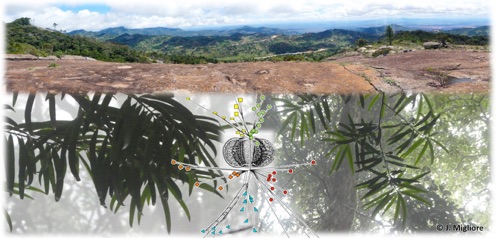
Supervisors: Olivier Hardy, Université Libre de Bruxelles, Belgium
Anne-Marie Lézine, CNRS LOCEAN Sorbonne Université, Paris, France
Afromontane forests are isolated on high-elevation habitats surrounded by radically different lowland environments, such as the African Rift System and the Cameroon Volcanic Line. The complex dynamics of species richness on such ‘sky islands’ is clearly linked to the separation by physical distance between mountain ranges, resulting in a habitat island. Some localized populations of plants tend towards speciation. In other cases, these mountains serve as refugia for species stranded by warming climates since the last glacial period. Indeed, since its origin the tropical Afromontane climate zone is believed to have undergone dramatic shifts in elevation and extent, influencing the distribution of plants and their persistence. However, the complex and recent history of Afromontane species has been rarely studied in phylogeographical studies, and it is essential to better understand the evolutionary history of such key species to predict their resilience capacity to ongoing and future environmental changes.
As part of the project VULPES – VULnerability of Populations under Extreme Scenarios, we focus on the Afromontane Podocarpus latifolius (Podocarpaceae) conifers, patchily distributed in Eastern, Central and Southern African highlands. While populations of lowland rain forest species have expanded during interglacial periods and have retracted and fragmented during glacial periods, the opposite pattern is expected for populations of Afromontane species. Genomic data were developed using high throughput sequencing tools through both the capture of chloroplast genomes and nuclear DNA microsatellites genotyping on an extensive sampling, covering the distribution range of P. latifolius. The levels of polymorphism detected provide a detailed phylogeographical signal to infer the evolutionary history of populations. Populations of P. latifolius are characterized by distinct phylogroups, more or less geographically distributed. Patterns of genetic variation are congruent with extensive gene flows and will be compared to the insights provided by palaeoecological records. Focusing on Podocarpus trees, the role of tropical mountains as museums/cradles of biodiversity, the latitudinal connections between Eastern and Central Africa, and the effects of habitat fragmentation will thus be discussed.
New genomic tools for studying the phylogeography of African rainforests
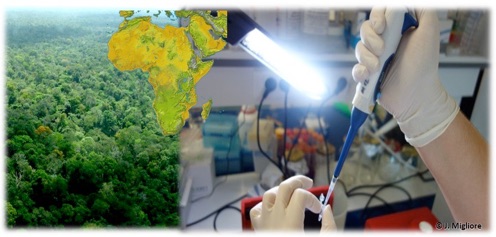
Supervisor: Olivier Hardy, Université libre de Bruxelles, Belgium
Tropical rainforests are the terrestrial biome with the greatest diversity of plant and animal species. Long-term stability has been considered for long as a prime cause of this remarkable biodiversity. However, paleoecological evidence of substantial change in the vegetation of tropical regions resulting from global climate fluctuation during the Quaternary, as well as evidence of significant ecological perturbation by humans in the last few thousand years, call for a reassessment of the temporal dynamics of biodiversity in tropical rainforests, and how this may influence their resilience and/or adaptation to rapidly accelerating human impact.
The general objective of our research aims to better understand how past environmental changes have shaped the current distribution and composition of African rainforests and the genetic diversity of their constituent tree species.
This knowledge is essential for forecasting how the forest will respond to current and future environmental impacts, because the way tropical forests have responded to past climatic and human perturbation reveals their resilience, or innate adaptive capacity, to current and future perturbations resulting from massive on-going deforestation, forest degradation and anthropogenic climate change.
More specifically, we aim to understand the processes leading to the diversification/differentiation of African rainforest tree biodiversity at inter-specific and intra-specific levels, in particular the respective roles of (i) past population fragmentation and the associated genetic drift (neutral stochastic process) and (ii) differential selection leading to adaptation to different habitats along environmental gradients (deterministic process).
In this context, we are developing next generation sequencing tools to analyze the genetic polymorphism of representative African rainforest trees, in close collaboration with UMR DIADE (team DYNADIV / IRD Montpellier). Three main methodological challenges are currently addressed:
-
1. The plastidial captures to sequence the whole chloroplast genome of key Annonaceae and Fabaceae trees, towards a better resolution of phylogenetic and phylogeographic inferences;
-
2. The design of microsatellite markers using genomic libraries, to perform population genetic analyses and better evaluating scenarii of evolution of populations;
-
3. The sequencing of microsatellite regions to integrate SNPs and SSRs variations, multiplexing a high number of individuals.
Finally, to reach a reliable view of the evolutionary history of forest-dwelling trees belonging to different functional groups, the phylogeography of the pioneer tree Musanga cecropioides (Urticaceae) will be undertaken.
AFRIFORD program
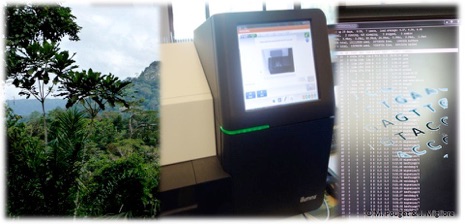
Research program: BELSPO (European program BRAIN-be / 2014-2018) AFRIFORD program “Genetic and paleoecological signatures of African rainforest dynamics: pre-adapted to change?”
AFRIFORD is a multi-disciplinary project integrating paleoecological analyses (palynology, anthracology) on lake and soil sediments, dendrochronology, vegetation modelling and population genetics. The project is structured in 8 work packages (WP). Three WP’s will valorise existing data sets and acquire complementary data on Population dynamics (WP1: tree dispersal, age structure), Evolution (WP2: phylogeny, phylogeography, divergence dating), and Paleoenvironments (WP3: palynology, anthracology, stable-isotope dendroclimatology). WP4 will provide a projective tool through vegetation modelling. The specific objectives will be reached within the integrative WP5 in which data and tools from WP’s 1 to 4 will be combined. Implications of our research for the maintenance of rainforest ecosystem services and strategic policy for biodiversity conservation will be addressed in WP6. Finally, two transversal WP’s are dedicated to project coordination (WP7) and the diffusion of results (WP8).
AFRIFORD partners: Université Libre de Bruxelles (ULB - Evolutionary Biology and Ecology unit), Universiteit Gent (UGent - Limnology Unit), Royal Museum for Central Africa (RMCA – Laboratory of Wood Biology), Université de Liège (ULg – Climate Modelling and Biogeochemical cycles unit / Behavioural Biology Unit / Topoclimatology unit), Université Pierre et Marie Curie (UPMC – Laboratory of Oceanography and Climate), University of Bern (UBern – Terrestrial Paleoecology Unit)
AFRIFORD website: http://afriford.ulb.ac.be
Project description, work packages and new scientific insights in
palaeoecology, population dynamics, evolution,
vegetation modelling and conservation.
Previous Postdoctoral Research

Genetic spatialization and phylogeography of endemic species, towards a transfrontaliar conservation of biodiversity in Southern Alps
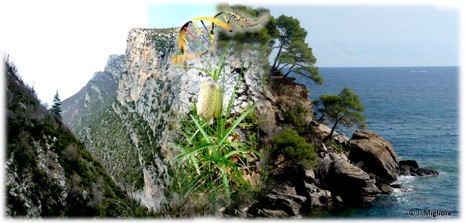
Supervisors: Frédéric Médail and Alex Baumel, Aix-Marseille Université, Institut Méditerranéen de Biodiversité et d’Ecologie marine et continentale (IMBE UMR CNRS/IRD), France
Research program and partners: ALCOTRA European program BIODIVAM "Biodiversity in the Alps of the Sea”, with the French Mediterranean Botanical Conservatory CBNMED of Porquerolles and the University of Genova – DISTAV
One part of the partners analyzed the species distribution and location of patrimonial plant species from the Rhone river to Genova, and until Grenoble in the North, in order to pinpoint key areas for taxonomic richness and endemism. Our main objective was the analysis and comparison of available molecular data in the Southern Alps hotspot of biodiversity. A spatialized genetic database was implemented using all the genetic quantitative data published in the scientific literature on plants, aquatic and terrestrial fauna. New plant models have been added, through an extensive BIODIVAM-sampling and the development of novel phylogeographical analyses: Fritillaria involucrata (Liliaceae) and Pinguicula reichenbachiana (Lentibulariaceae). Then, we used GIS tools to better estimate the analysis pressure in the S. Alps (sampling, taxa, endemism, biogeographical affinity, molecular markers) and the patterns of genetic originality (private markers) and diversity (several indices from population genetics) in the studied area. All these levels of organization of biodiversity are currently confronted to examine their congruency and the effectiveness of the conservation areas.
PhD Research

Imprints of environmental changes on the phylogeography of the genus Myrtus in the Mediterranean and Sahara
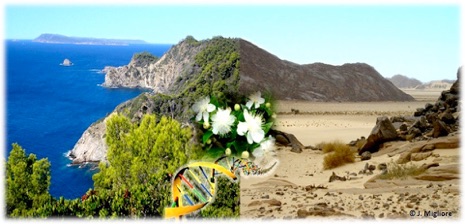
Supervisors: Frédéric Médail and Alex Baumel, Aix-Marseille Université, Institut Méditerranéen de Biodiversité et d’Ecologie marine et continentale (IMBE UMR CNRS/IRD), France
Research program and partners: Region Provence-Alpes-Côte d’Azur, French Botanical Conservatory of Corsica, Mediterranean Botanical Conservatory of Porquerolles, INRA Avignon.
A better understanding of the origin and evolution of the diversity of life requires the development of biogeographical approaches. This PhD thesis considered the phylogeography of the Common Myrtle (Myrtus communis L., Myrtaceae), a characteristic and common plant of the Mediterranean matorral, and its relationship with the Nivelle Myrtle (Myrtus nivellei Batt. & Trab.), endemic to the central Saharan mountains. An objective was also to examine especially the influence of paleogeography and climate changes on the genetic diversity of these two taxa. Our approach aimed at being integrative, combining paleobotanical data, genetic data (sequencing, multilocus genotyping and microsatellites), modelling of molecular evolution, polymorphism and heritability of the growth in controlled conditions, and modelling of bioclimatic niche.
The analysis of 173 populations of the Common Myrtle and 23 populations of the Nivelle Myrtle revealed a strong phylogeographical signal, whose spatio-temporal framework was provided by the dating of divergences and the reconstruction of ancestral areas within the molecular phylogenies using Bayesian analytical methods. Three main results can be highlighted. (i) With an origin dated to the early Miocene, the history of M. communis can be summarized by two periods of diversification associated with the environmental changes occurring in the Miocene/Pliocene transition and in the Pleistocene. A vicariance phenomenon has induced the isolation of an eastern Mediterranean lineage. Recent diversification events have also been detected in the western part of the Mediterranean Basin, with in-return migration to the eastern Mediterranean, and also dispersal to the Azores and Madeira islands, and to the Sahara. (ii) Within the refugia-mountains of the Central Sahara, the alternation of wet and dry periods seems to have induced the isolation of the populations of M. nivellei per mountain range, with genetic erosion. In parallel to this high regional differentiation, gene flows within these mountain ranges and vegetative multiplication have been detected. (iii) Finally, the absence of divergence of Mediterranean insular populations of M. communis contrasts with the long-term persistence of Myrtle lineages restricted to the Azores and Madeira islands, and to the speciation of M. nivellei in the Sahara. The discussion of these results provides new perspectives on comparative phylogeography, genomics and conservation biogeography.
Publications

Migliore J, Baumel A, Leriche A, Juin M, Médail F (2018) Surviving glaciations in the Mediterranean region: an alternative to the long-term refugia hypothesis. Botanical Journal of the Linnean Society 187, 537-549.
https://academic.oup.com/botlinnean/article-abstract/187/4/537/5050124
Tosso F, Hardy OJ, Doucet J-L, et al. (2018) Evolution in the Amphi-Atlantic tropical genus Guibourtia (Fabaceae, Detarioideae), combining NGS phylogeny and morphology. Molecular Phylogenetics and Evolution 120, 83-93.
https://www.sciencedirect.com/science/article/pii/S1055790316303840
Donkpegan ASL, Doucet J-L, Migliore J, et al. (2017) Evolution in African tropical trees displaying ploidy-habitat association: the genus Afzelia (Leguminosae). Molecular Phylogenetics and Evolution 107, 270-281.
http://www.sciencedirect.com/science/article/pii/S1055790316303128
Monthe FS, Duminil J, Tosso F, Migliore J, Hardy OJ (2017) Characterization of microsatellite markers in two exploited African trees, Entandrophragma candollei and E. utile (Meliaceae). Applications in Plant Sciences 5, 1600130.
https://doi.org/10.3732/apps.1600130
Tosso F, Doucet J-L, Migliore J, et al. (2017) Characterization of microsatellite markers in the African tropical tree species Guibourtia ehie (Fabaceae, Detarioideae). Applications in Plant Sciences 5, 1700023.
https://doi.org/10.3732/apps.1700023
Djamali M, Jones MD, Migliore J, et al. (2016) Olive cultivation in the heart of the Persian Achaemenid Empire: new insights into agricultural practices and environmental changes reflected in a late Holocene pollen record from Lake Parishan, SW Iran. Vegetation History and Archaeobotany 25, 255-269.
http://link.springer.com/article/10.1007%2Fs00334-015-0545-8
Demenou BB, Migliore J, Tosso F, Kaymak E, Hardy OJ (2015) Development and characterization of microsatellite markers in the African deciduous tree Terminalia superba (Combretaceae). Applications in Plant Sciences 3, 1500070.
https://doi.org/10.3732/apps.1500070
Migliore J, Baumel A, Juin M, et al. (2013) Surviving in mountain climate refugia: new insights from the genetic diversity and structure of the relict shrub Myrtus nivellei (Myrtaceae) in the Sahara Desert. PLoS ONE 8, e73795.
http://journals.plos.org/plosone/article?id=10.1371/journal.pone.0073795
Pouget M, Youssef S, Migliore J, et al. (2013) Phylogeography sheds light on the central-marginal hypothesis in a Mediterranean narrow endemic plant. Annals of Botany 112, 1409-1420.
http://aob.oxfordjournals.org/content/112/7/1409.short
Migliore J, Baumel A, Juin M, Médail F (2012) From Mediterranean shores to central Saharan mountains: key phylogeographical insights from the genus Myrtus. Journal of Biogeography 39, 942-956.
http://onlinelibrary.wiley.com/doi/10.1111/j.1365-2699.2011.02646.x/full
Migliore J, Baumel A, Juin M, et al. (2011) Genetic diversity and structure of a Mediterranean endemic plant in Corsica (Mercurialis corsica, Euphorbiaceae). Population Ecology 53, 573-586.
http://link.springer.com/article/10.1007/s10144-011-0266-5
Benslama M, Andrieu-Ponel V, Guiter F, et al. (2010) Nouvelles contributions à l’histoire tardiglaciaire et holocène de la végétation en Algérie : analyses polliniques de deux profils sédimentaires du complexe humide d’El-Kala. Comptes Rendus - Biologies 333, 744-754.
http://www.sciencedirect.com/science/article/pii/S1631069110001976
Several articles to come…
Implication in Research life

Teaching activities: Teaching assistant during 5 years and courses in BSc and Msc in Aix, Marseille and Toulon universities (CM/TD/TP): Plant biology and reproduction; Population genetics; Mediterranean ecosystems: specificities, dynamics and constraints; Biogeography; Systematics and Phylogenetics; Plant physiology; Evolutionary biogeography and paleoenvironments; Phylogeography; Adaptive ecology of plants
Administrative tasks: Co-coordination program BELSPO AFRIFORD (with O. Hardy); Elected representative of PhD students in the Advisory Council of IMBE (2007-2012); High implication in the platforms of molecular biology IMBE + ULB-ebe; Scientific animation; Research supervision of 12 BSc and PhD students; Participation of the writing of 8 research projects
Organization of conferences: (i) Organization Conference “The Sahara, impacts of extreme environment changes on biodiversity” (Aix-en-Provence, 200 persons, 28-29/11/2013); (ii) Help to the organization of 35th meeting of the French Group of Population Genetics and Biology (Marseille, 100 persons, 27-30/08/2013); (iii) Active help to the organization of the Congress of PhD student in Environmental Sciences Aix / Marseille / Toulon / Avignon (Cassis, 200 persons, 29-30/04/2010); (iv) Secretary in chief, general coordination, and abstract book editor European Conference of Tropical Ecology “(re)Connecting biodiversity in space and time” (Brussels, 400 persons , 6-10/02/2017); (v) Helper and abstract book co-editor European Conference of Tropical Ecology “Challenges in tropical ecology and conservation - global perspectives” (Paris, 320 persons, 26-29/03/2018)
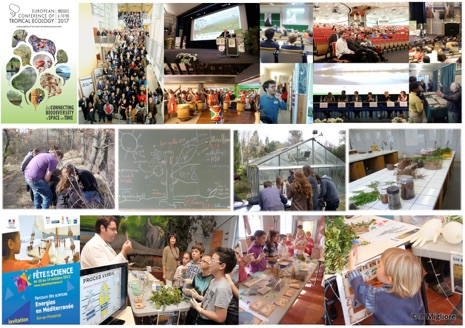
For more information

. Webspace IMBE with detailed CV: http://www.imbe.fr/jeremy-migliore.html
. ResearchGate profile: https://www.researchgate.net/profile/Jeremy_Migliore
. AFRIFORD research program: http://afriford.ulb.ac.be
. VULPES research program: https://vulpesproject.wixsite.com/vulpes

















